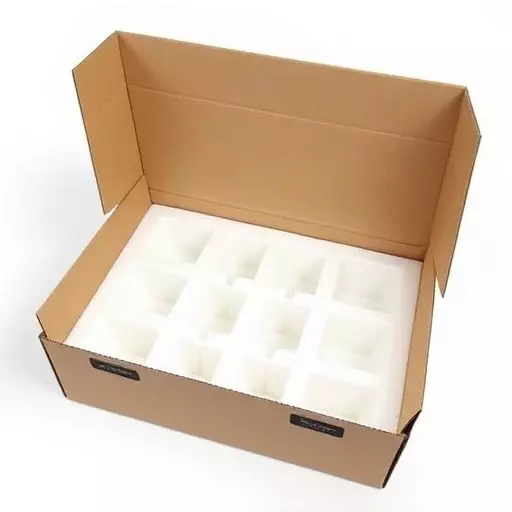Automotive foam inserts, tailored to fit specific part shapes and sizes, are essential for protecting delicate spare parts during shipping. Customization ensures maximum impact absorption and security, reducing breakage risk and enhancing customer satisfaction. In Holland, Ohio, businesses leverage these innovative solutions to safeguard high-value components in the automotive industry, fostering reliable reputations through product integrity.
“In the world of automotive shipping, ensuring the safe arrival of spare parts is paramount. This is where foam inserts step in as unsung heroes, providing crucial protection during transit. Custom automotive foam inserts, tailored to fit specific part shapes and sizes, offer a game-changing solution. This article explores the significance of these inserts, from enhancing safety for fragile components to their advantages in Holland, Ohio’s automotive industry. We delve into materials, manufacturing, design integration, and best practices, shedding light on why they are an indispensable element in packaging designs.”
- Understanding the Importance of Foam Inserts in Automotive Shipping
- Customization: Creating Inserts for Specific Automotive Parts
- The Role of Foam Inserts in Protecting Fragile Components
- Advantages of Using Foam Inserts in Holland, Ohio
- Materials and Manufacturing Processes for Automotive Foam Inserts
- Integration of Inserts into Packaging Design
- Best Practices for Implementing Custom Foam Inserts
Understanding the Importance of Foam Inserts in Automotive Shipping
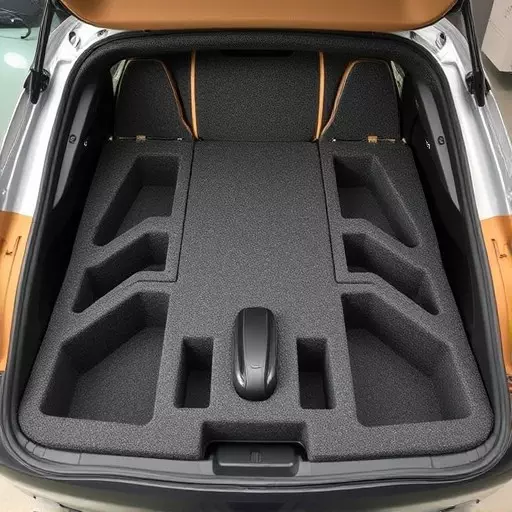
In the world of automotive logistics, ensuring the safe arrival of spare parts is paramount. This is where custom automotive foam inserts step in as unsung heroes. These specialized packaging solutions are designed to cradle and protect fragile automotive components during transit, minimizing the risk of damage often associated with traditional shipping methods. By utilizing innovative foam materials, these inserts create a personalized fit for each unique part, preventing movement and potential breakage.
When it comes to automotive foam inserts for shipping in Holland, Ohio, or beyond, businesses have discovered their value. Custom inserts tailored to specific parts ensure that delicate items arrive at their destination in pristine condition. This is especially crucial for high-value or specialized components, where even a slight mishandling can lead to significant financial losses. With the right foam insert, automakers and spare parts distributors can confidently navigate the shipping process, ensuring customer satisfaction and maintaining the integrity of their products.
Customization: Creating Inserts for Specific Automotive Parts
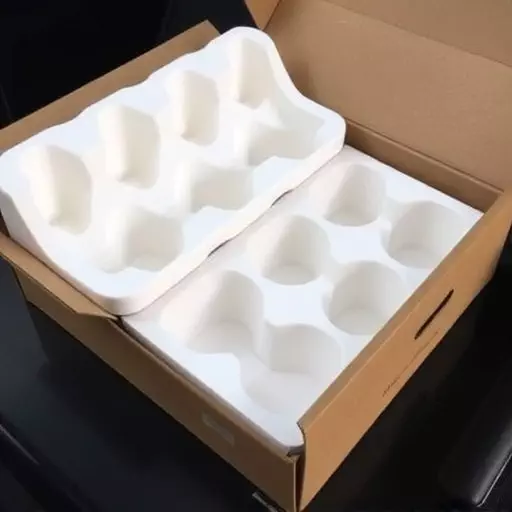
In the world of automotive spare parts packaging, customization is key to ensuring safe and secure shipping. Custom automotive foam inserts are designed to perfectly accommodate specific part shapes and sizes, providing a snug fit that reduces movement during transit. This level of customization is particularly important for fragile automotive components, where even minor jostling can cause damage. By utilizing specialized foam materials and precise cutting techniques, manufacturers create inserts tailored to the unique dimensions of each part.
For instance, a local automotive supplier in Holland, Ohio, might collaborate with packaging experts to develop custom foam inserts for shipping delicate engine parts or intricate car interiors. These inserts not only protect the parts from physical damage but also from moisture and dust, ensuring they arrive at their destination in pristine condition. Such personalized solutions are revolutionizing how automotive industries approach spare part logistics, guaranteeing that every component is handled with care throughout its journey from manufacturer to mechanic.
The Role of Foam Inserts in Protecting Fragile Components
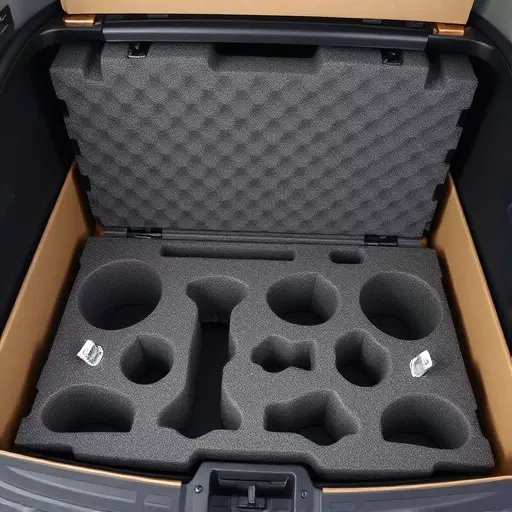
Foam inserts play a pivotal role in safeguarding delicate and fragile components during shipping, especially in the automotive industry. Custom automotive foam inserts are designed to fit precisely around these parts, providing a protective cushion that prevents damage caused by movement and shock during transit. This is particularly crucial for high-value or intricate automotive spare parts, ensuring they reach their destination in pristine condition.
The versatility of these foam inserts allows them to accommodate various shapes and sizes, making them ideal for packaging fragile automotive components. They help maintain the integrity of the parts, reducing the risk of breakage or deformation that could occur without such specialized padding. This level of protection is essential when dealing with automotive sectors where precision and reliability are paramount, ensuring that spare parts manufacturers and suppliers meet the highest standards in delivering their products safely.
Advantages of Using Foam Inserts in Holland, Ohio
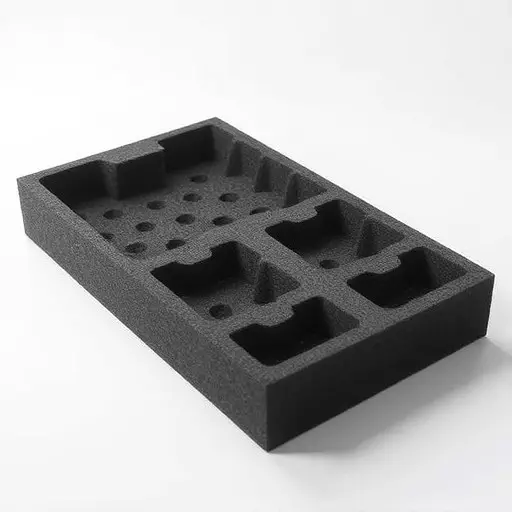
In Holland, Ohio, adopting foam inserts for spare parts packaging offers significant advantages in the automotive industry. With a focus on protecting fragile and delicate components during shipping, custom automotive foam inserts have become an indispensable tool. These innovative solutions are tailored to fit specific part sizes and shapes, ensuring maximum impact absorption and security. By using advanced materials, foam inserts can conform to intricate automotive pieces, providing a snug fit that prevents movement and potential damage.
Local businesses in Holland can benefit from the efficient protection these inserts offer, especially when dealing with high-value or fragile parts. The custom nature of foam inserts allows for enhanced product care, reducing the risk of breakage during transit. This is particularly crucial for the local automotive spare parts market, where maintaining product integrity is essential to customer satisfaction and building a reliable reputation.
Materials and Manufacturing Processes for Automotive Foam Inserts

Automotive foam inserts are typically crafted from a variety of materials designed to offer optimal protection for fragile auto components during shipping and handling. Commonly used materials include closed-cell polyethylene foams, polyurethanes, and polypropylenes. These materials are chosen for their lightweight yet robust nature, ensuring parts arrive in pristine condition despite potential jostling and bumps.
Manufacturing processes for custom automotive foam inserts involve a combination of precision cutting, molding, and forming techniques. After selecting the suitable material, manufacturers use computer-aided design (CAD) software to create precise templates tailored to specific spare part dimensions. These templates guide the cutting process, ensuring exact fitment. Subsequently, the raw foam is heated and molded into desired shapes, often with additional layering or bonding for enhanced durability. This meticulous manufacturing ensures that each insert is not only custom-fit but also capable of withstanding the rigors of automotive logistics in Holland, Ohio, and beyond.
Integration of Inserts into Packaging Design
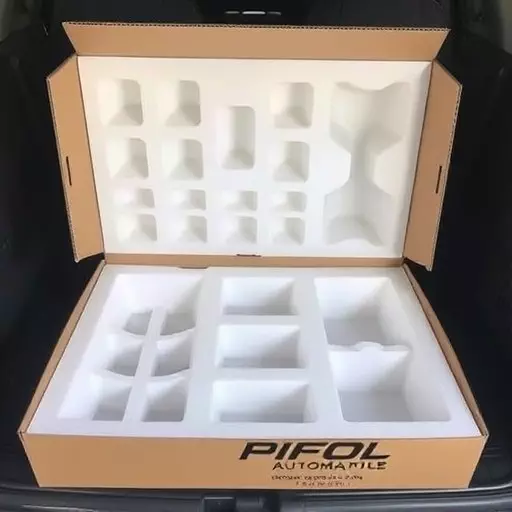
The seamless integration of custom automotive foam inserts into packaging design is a game-changer in the shipping and protection of fragile automotive spare parts. These innovative solutions, often crafted in Holland, Ohio, offer a tailored approach to securing components with precision and care. By considering the unique dimensions and shapes of various automotive parts, manufacturers can create foam inserts that perfectly cradle and protect them during transit. This customization ensures that every corner and curve of the part is accounted for, minimizing the risk of damage.
Automotive foam inserts play a pivotal role in enhancing the overall packaging experience. They not only provide structural support but also act as a buffer against shocks and vibrations during shipping. This is particularly crucial for delicate parts, where even minor disruptions can lead to significant damage. With custom designs, manufacturers can ensure that each package is optimized for its specific contents, making them ideal for diverse automotive applications.
Best Practices for Implementing Custom Foam Inserts

When implementing custom foam inserts for packaging fragile automotive parts, there are several best practices to keep in mind. Firstly, understand your parts’ specific needs. Different components require unique protective measures due to varying shapes, sizes, and fragility. This knowledge will guide your selection of the appropriate type of foam insert—open-cell, closed-cell, or other specialized options. Customization is key; working with a reliable manufacturer allows you to create inserts tailored to your exact dimensions and specifications. This ensures a snug fit, minimizing movement during shipping.
Additionally, consider material sustainability and eco-friendliness. Many modern foam manufacturers offer recyclable or biodegradable materials, aligning with environmental standards. Proper foam density selection is also crucial; denser foams provide more protection but add weight, so finding the right balance for cost-effective yet secure packaging is essential. Regularly review and update your custom foam insert designs to keep up with changes in packaging technology and industry standards, ensuring optimal protection for your valuable automotive spare parts.

